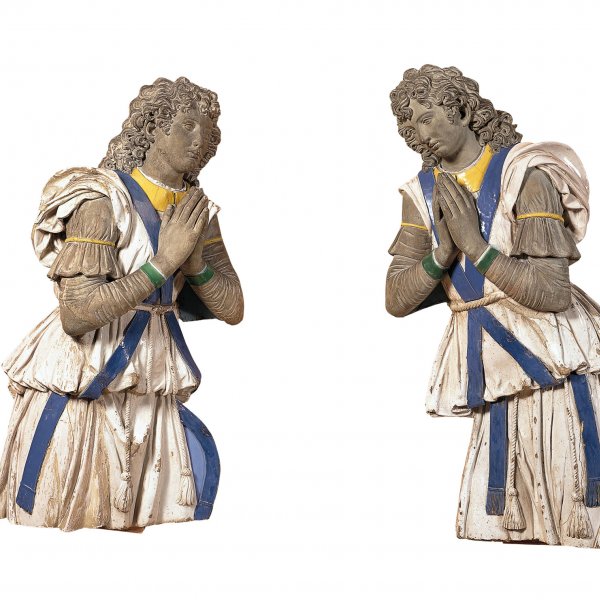Della Robbia (Workshop Of)
Born and raised in Florence, Andrea di Marco della Robbia trained in his early years at the workshop of his uncle Luca as a stone carver. During the 1470s, Andrea began to reveal his personal talent and slowly acquired his own artistic independence as a sculptor. By that time, the artist also undertook the management of the family workshop. In spite of his earlier artistic experience Andrea's creations significantly differed from Luca's symbolic works, for the former was more attracted by a peculiar type of narrative language. Besides the great number of altarpieces executed for Tuscan cathedrals, Andrea della Robbia received several commissions from all over the Italian peninsula, including, Venice, Genoa, Umbria and Calabria. In his mature style Andrea developed a strong naturalism that led him to emphasise the pictorial effects of his sculptural reliefs (for example by increasing the use of bright glassy coating) in an attempt to find a formula that would synthesise sculptural and pictorial values. At the end of the 15th century Andrea was forced to hire more assistants, among whom were five of his twelve sons, for the workshop was insufficient to face the overwhelming amount of commissions. Such a strategic choice resulted in a significant increase in output and, accordingly, in revenues. Among the artist's most celebrated works are the series of altarpieces for the Franciscan order in Assisi including the statue of St. Francis for Santa Maria degli Angeli and the tin-glazed terracottas produced for the Chiesa Maggiore and the Chiesa della Stimmate, both part of the convent at La Verna. Other noteworthy examples include the group of Tondos decorating the loggia of the Ospedale degli Innocenti in Florence that feature a series of infants encouraging wealthy Florentines to perform charitable works and the decorations in Santa Maria delle Carceri in Prato.
Dominique Lora





